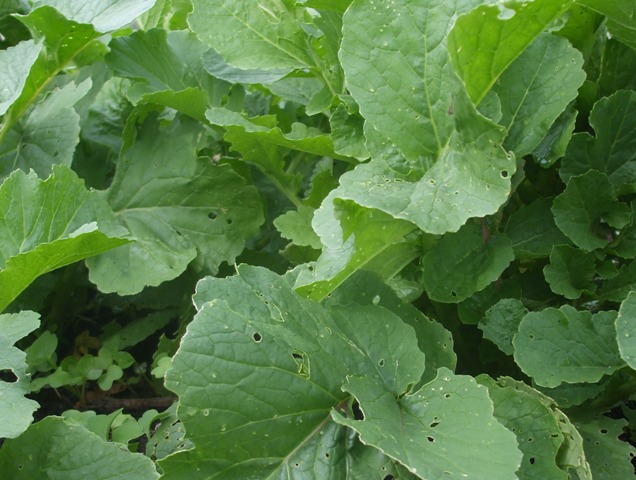
Cover crops, usually grasses or legumes, are crops that are planted between, or sometimes with, regular crops, primarily to protect and improve the soil. Depending on the type of cover and how it is used, benefits can include improved soil fertility and quality, moisture conservation, decreased soil erosion and control of weeds, pests and diseases.
Cold season cover crops include:
- Grasses such as rye, triticale, oats and black oats;
- Brassicas such as radish (fodder and tillage), turnips and kale;
- Legumes like vetch (hairy and grazing vetch), forage peas (pictured above), sweet clover and crimson clover.
Uses of Cover Crops
Some of these crops are used to create a “green manure”. This means, once green or soon after flowering, the entire plant is dug back into the soil. The purpose of a green manure is soil improvement through the addition of organic matter.

“Catch crops” are planted to retain and recycle plant nutrients following a main crop, thus preventing leaching.
A “living mulch” is a cover crop that is inter-planted with an annual or perennial cash crop in order to suppress weeds, reduce soil erosion, improve soil fertility and improve water infiltration. These crops take up space and light, thereby shading the soil and reducing the opportunity for weeds to establish themselves.
Certain crops used for cover, such as fodder radish, have roots that are able to penetrate and break up compacted layers in the soil.
Some cover crops are used as so-called “trap crops” to attract pests away from the crop of value and towards what the pest sees as a more favourable habitat.
Cool season cover crops can also provide grazing for your livestock, which will be useful in winter.
When you are choosing cover crops you need to consider your soil and climate conditions and why you are planting a crop.
Smallholders can also put together a mix of cover crop seeds, using black oats, stooling rye, vetch, fodder peas, fodder radish, tiller radish, and rape.

